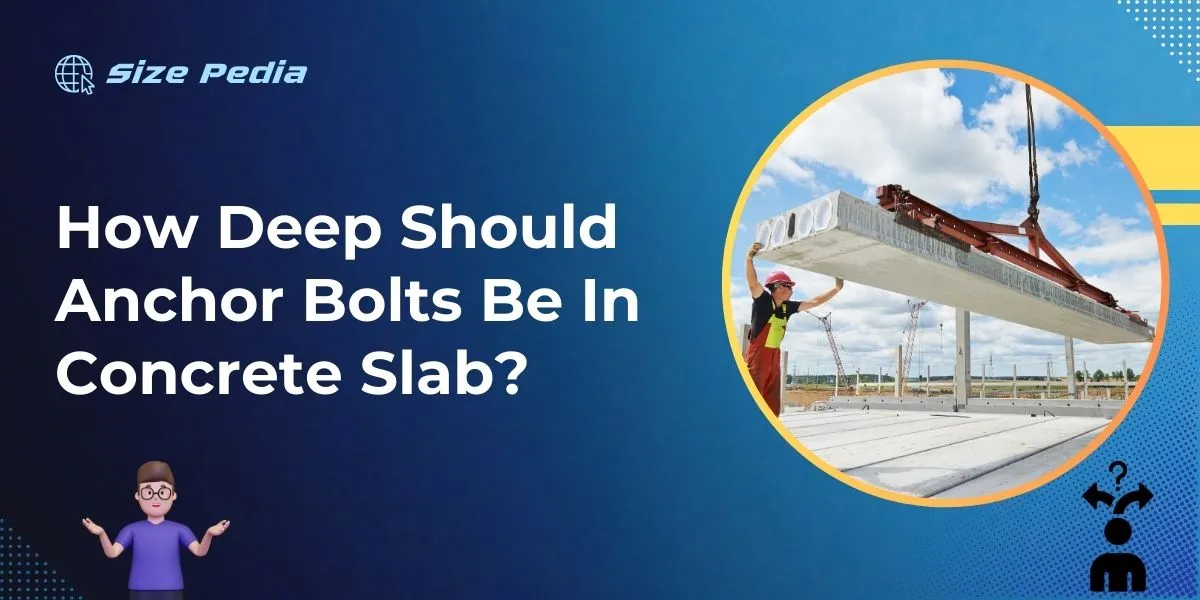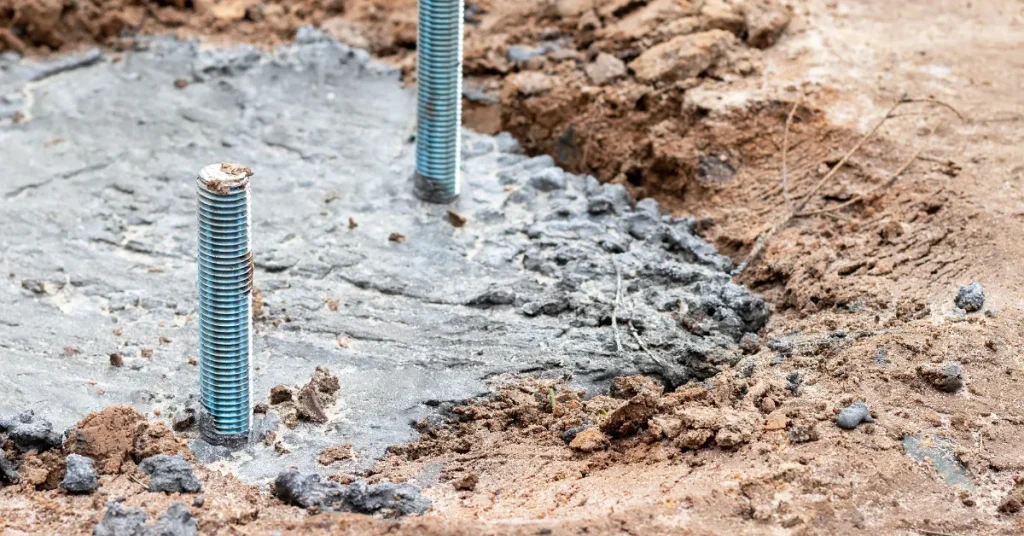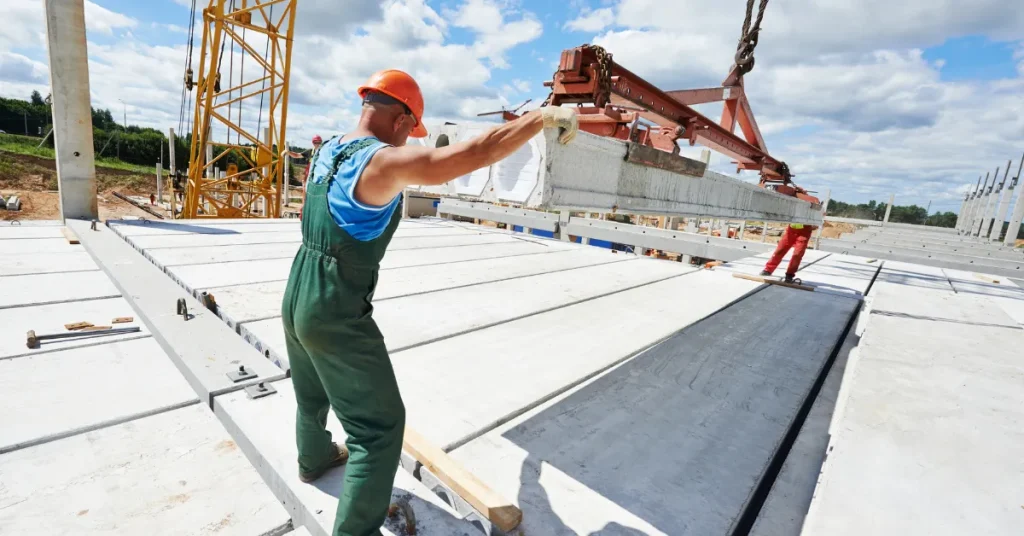Anchor bolts should be embedded in concrete to a depth of at least 4 inches. The specific project requirements and bolt size can necessitate deeper embedment.
Securing structures to concrete foundations relies heavily on the proper installation of anchor bolts. Depth is a critical factor for ensuring stability and strength in the connection.
Construction professionals often refer to building codes and manufacturers’ recommendations to determine the correct depth for anchor bolts, which can vary depending on the application.
With a focus on safety and durability, understanding and adhering to the minimal embedment depth of 4 inches is just the starting point.
This knowledge is crucial for DIY enthusiasts, builders, and engineers alike to prevent structural failures and maintain integrity in all types of construction projects.

The Role Of Anchor Bolts In Construction
An essential component in modern construction, anchor bolts play a critical role. They ensure buildings stand firm against forces of nature.
These bolts create a vital link between concrete foundations and structures above. Proper installation and depth are key for optimal performance.
Ensuring Structural Stability
Anchor bolts must penetrate concrete to a depth that guarantees stability.
- Tension and shear forces are considered in the depth calculation.
- The type of load the structure will bear determines the necessary bolt depth.
Different guidelines may suggest varying depths. Industry standards often recommend a minimum embedment equal to 10 times the diameter of the bolt. This ensures a secure hold and resistance to movement or shifting.
Connecting Frameworks To Foundations
For a building’s framework to resist environmental stresses, it must integrate seamlessly with its foundation. Anchor bolts are the linchpins in this connection.
Anchoring devices fix columns and other structural elements firmly to the foundation.
This prevents unwanted movement during extreme conditions like earthquakes or high winds.
The correct placement of anchor bolts forms a continuous path for loads to transfer from the building to the ground. The depth, number, and type of anchor bolts used are aspects well-considered by engineers for each project.
Diving Into Anchor Bolt Types

When building a project, certain details can make a big difference. Anchor bolts embed in concrete to support structures. It’s crucial to understand the different anchor bolt types for success. Each type suits different conditions and loads.
Choosing Between J-bolts And Wedge Anchors
Choosing the right anchor bolt is essential. The choice depends on the project specifications. Think about load type, concrete strength, and install location. J-bolts and wedge anchors serve differing purposes.
- J-bolts offer flexibility during the initial placement.
- Wedge anchors provide strong holding power for heavy loads.
Installation depth differs between J-bolts and wedge anchors. It impacts structural integrity. Common practice says use a depth at least 4 to 6 times the bolt diameter. Always check local building codes.
Material Considerations For Longevity
The material of anchor bolts affects longevity. It withstands environmental stress and load demands. Options include:
| Material | Features |
| Steel | Strong, but can corrode |
| Stainless Steel | Corrosion-resistant, sturdy |
| Galvanized Steel | Extra corrosion protection |
Material choice affects how deep anchor bolts should be. Deeper placements might be needed for corrosive environments. Consistent material quality across all anchor bolts is crucial for project integrity.
Key Factors Influencing Anchor Bolt Depth
Deciding on the right depth for anchor bolts in a concrete slab involves several key factors. These factors ensure a secure and sturdy connection for various construction applications. Let’s explore the crucial elements that determine how deep anchor bolts need to be.
Load Requirements And Concrete Strength
Load requirements directly impact anchor bolt depth. Anchor bolts must handle different types of loads:
- Tension Loads: Pulling forces that try to lift the bolt out of the concrete.
- Shear Loads: Sideways forces that slide the bolt within the concrete.
Both the quantity and type of bolts used depend on these loads. Engineers calculate the required depth using formulas that consider these factors.
Additionally, concrete strength cannot be overlooked. Concrete rated at a higher psi can hold bolts better. The rule of thumb is to embed the bolt at least 15 times the bolt’s diameter into the concrete for optimal strength.
Building Code Guidelines And Regulations
Local and international building codes provide guidelines for anchor bolt depth. Always consult the latest International Building Code (IBC) or local regulations before installing anchor bolts. Here are some general guidelines:
- Minimum embedment depths are specified to ensure safety.
- Edge distance requirements prevent concrete from cracking.
These codes may vary based on region and the type of structure you’re working on. Compliance with these regulations not only ensures stability but also legal safety in your construction project.
Calculating The Ideal Depth For Anchor Bolts
Setting anchor bolts in a concrete slab is crucial for creating a stable foundation. The right depth ensures your structures stand strong. Let’s dive into how you can calculate this essential measurement.
Understanding Embedment Depth
Embedment depth is how far an anchor bolt goes into the concrete. This depth affects the bolt’s ability to hold weight. It must reach a point in the concrete where the strength is enough to resist forces. This is often near the middle of the slab.
- The thickness of the concrete slab.
- The load the bolt will support.
- The type of stress – shear, tension, or both.
These factors guide the depth needed for secure anchoring.
Formula For Optimal Anchorage
Use this formula to find the ideal anchor bolt embedment depth:
| Symbol | Meaning | Value |
| d | Embedment Depth | ? |
| D | Diameter of Bolt | Depends on the bolt |
| h | Thickness of Slab | Measure first |
| L | Load to Support | Calculate based on use |
The formula:
d = D x (h/2) / L
This gives a start point for depth. Always add extra for safety. The final depth is often taken as the larger between 4D or d+10 mm.
Installation Tips For Anchor Bolts In Concrete

Secure structures start with properly installed anchor bolts. These critical components link the concrete foundation to structures such as building frameworks, machinery bases, and roadway guardrails. Follow these tips to ensure your anchor bolts hold strong.
Preparing The Concrete Slab
Begin with a sound foundation for anchor bolt insertion:
- Inspect the slab for evenness and cracks.
- Mark precise locations for bolt placement.
- Use a hammer drill with a correct-sized masonry bit.
- Ensure holes are clean of debris using compressed air or a wire brush.
Slab thickness dictates anchor bolt depth. Aim for a minimum embedment equal to five times the bolt’s diameter.
Avoiding Common Mistakes During Installation
Prevent future failures with these installation safeguards:
- Verify depth: Use a depth gauge to ensure each hole reaches the necessary depth.
- Check alignment: Bolts should stand perpendicular to the concrete surface.
- Avoid overtightening: Follow torque specifications to prevent bolt weakening.
- Test for stability: Apply slight pressure to ensure there’s no movement.
Temperature and humidity affect the concrete cure time. Adjust your installation schedule accordingly.
Maintaining The Integrity Of Fixed Anchor Bolts
Anchoring deep into a concrete slab provides the foundational strength required for structural stability.
Fixed anchor bolts play a pivotal role here. They secure buildings, bridges, and industrial equipment, forming a vital link between the structure and its base.
Over time, maintaining this bond is crucial to prevent structural failures and enhance safety. Thus, regular assessments and protective measures are essential components of ensuring the longevity of anchor bolts.
Regular Inspection Schedules
Performing systematic checks on anchor bolt conditions helps detect potential issues before they escalate. Regular inspections must assess:
- Bolt tightness: Ensuring bolts remain securely fastened.
- Concrete integrity: Checking for cracks or signs of wear around the bolt.
- Rust and corrosion: Identifying early stages to prevent further deterioration.
Diligent schedules vary based on environmental conditions and the loads borne by the bolts. Routinely documenting findings allows for trend analysis and proactive maintenance decisions.
Strategies For Mitigating Corrosion
Keeping fixed anchor bolts resistant to corrosion safeguards their durability. Implement the following strategies:
| Strategy | Description | Frequency |
| Galvanization | Apply a zinc coating to protect the steel. | Upon installation |
| Protective Coatings | Use epoxy or polyurethane layers. | Periodically |
| Cathodic Protection | Electrochemical method to prevent rust. | As required |
Choosing suitable corrosion-resistant materials at the outset extends the lifespan of anchor bolts. Supplementary sealing of crevices and cracks near bolt placements prevents water ingress, further mitigating the risk of corrosion.
FAQs About How Deep Should Anchor Bolts Be In Concrete Slab
What Is The Ideal Depth For Anchor Bolts In Concrete?
Anchor bolts should be embedded deep enough to ensure stability, typically at least 4 to 6 inches into the concrete. This depth provides adequate holding strength for most applications.
Can Anchor Bolt Depth Vary With Slab Thickness?
Yes, anchor bolt depth can vary depending on slab thickness. For thicker slabs, bolts may need to be longer to maintain proportionate embedment and secure anchoring.
How Do Load Requirements Affect Anchor Bolt Depth?
Load requirements directly influence anchor bolt depth. Higher loads require deeper embedment for increased holding power to prevent failure under stress.
Does Concrete Strength Impact Anchor Bolt Depth?
Stronger concrete may allow for shallower embedment due to its higher load-bearing capacity. However, following standard depth guidelines is recommended for uniformity.
Conclusion
Determining the correct depth for anchor bolts in concrete slabs is crucial for structural stability.
Aim for depths that meet local building codes and manufacturer’s recommendations. Remember, the rule of thumb—25 to 30 times the bolt’s diameter—offers a starting point.
Proper depth ensures a secure, lasting hold for any construction project.
Resources:
1. https://basc.pnnl.gov/resource-guides/seismic-and-thermal-resistance-slab-grade-foundations-turned-down-footings
